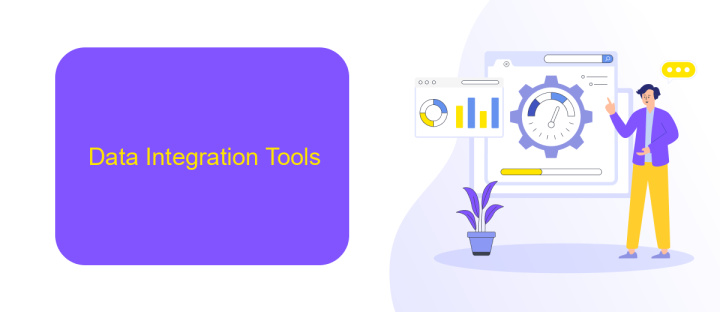Data Integration Tools and Techniques
In today's data-driven world, effective data integration is crucial for organizations seeking to harness the full potential of their information assets. Data integration tools and techniques enable seamless merging of data from disparate sources, ensuring consistency, accuracy, and accessibility. This article explores the key tools and methodologies that facilitate efficient data integration, empowering businesses to make informed decisions and drive innovation.
Introduction
Data integration is a critical aspect of modern business operations, enabling organizations to combine data from various sources into a unified view. This process not only enhances data accessibility but also ensures that decision-makers have accurate and up-to-date information at their fingertips. Effective data integration can streamline workflows, improve customer experiences, and drive business growth.
- ETL (Extract, Transform, Load) processes
- Data warehousing
- API integrations
- Data virtualization
- Cloud-based integration platforms
One notable tool in the realm of API integrations is ApiX-Drive. This service simplifies the process of connecting disparate systems, allowing users to automate data transfers between applications without requiring extensive coding knowledge. By leveraging such tools, businesses can ensure seamless data flow, reduce manual errors, and enhance operational efficiency. As data continues to grow in volume and complexity, the importance of robust data integration solutions will only increase.
Data Integration Tools

Data integration tools play a crucial role in modern data management by enabling seamless and efficient merging of data from multiple sources. These tools help organizations consolidate data from various databases, applications, and systems, ensuring a unified and consistent view of information. Popular data integration tools include Talend, Informatica, and Microsoft SQL Server Integration Services (SSIS), each offering unique features to address different integration needs. These tools support various data formats and provide capabilities such as data transformation, data cleansing, and data mapping to ensure high-quality and reliable data integration.
One notable service in the data integration landscape is ApiX-Drive, which simplifies the process of connecting different applications and automating workflows. ApiX-Drive offers a user-friendly interface and supports a wide range of integrations, making it an ideal choice for businesses looking to streamline their data management processes without extensive technical expertise. By leveraging such tools, organizations can enhance their data-driven decision-making, improve operational efficiency, and maintain data accuracy across their systems.
Data Integration Techniques

Data integration techniques are essential for combining data from diverse sources into a unified view, facilitating better decision-making and operational efficiency. These techniques vary based on the complexity and requirements of the integration process.
- ETL (Extract, Transform, Load): This technique involves extracting data from various sources, transforming it into a suitable format, and loading it into a target database or data warehouse.
- Data Virtualization: This approach allows users to access and manipulate data from multiple sources without moving it, providing a real-time, unified view of the data.
- API Integration: Using APIs, data can be seamlessly integrated between different systems and applications. Tools like ApiX-Drive simplify the setup of API integrations, enabling automated data transfers and synchronization.
- Data Replication: This technique involves copying data from one database to another, ensuring consistency and availability across different systems.
Choosing the right data integration technique depends on your specific needs, such as the volume of data, real-time processing requirements, and the complexity of data sources. Tools like ApiX-Drive can streamline the integration process, making it easier to manage and automate data flows across various platforms.
Data Integration Best Practices

Effective data integration is crucial for ensuring seamless data flow across various systems and applications. To achieve this, it is essential to follow best practices that can help streamline the integration process and maintain data integrity.
Firstly, always start with a clear understanding of your data sources and the specific requirements for integrating them. This involves identifying the data formats, structures, and any potential challenges that may arise during the integration process.
- Ensure data quality by validating and cleansing data before integration.
- Utilize robust integration tools like ApiX-Drive for automated and efficient data synchronization.
- Implement data governance policies to manage data access and security.
- Monitor and maintain integration workflows regularly to prevent disruptions.
By adhering to these best practices, organizations can enhance their data integration efforts, leading to improved data accuracy and operational efficiency. Leveraging tools like ApiX-Drive can further simplify the integration process, allowing businesses to focus on their core activities while ensuring reliable data connectivity.


Conclusion
In conclusion, data integration tools and techniques are essential for organizations to seamlessly connect disparate data sources, ensuring a unified and comprehensive view of their data landscape. These solutions not only enhance data quality and accessibility but also drive informed decision-making processes. By leveraging advanced integration platforms, businesses can automate data workflows, reduce manual errors, and achieve greater operational efficiency.
One such tool that stands out is ApiX-Drive, which simplifies the integration process by providing an intuitive interface and robust connectivity options. ApiX-Drive enables users to effortlessly sync data across various applications and services, empowering organizations to focus on strategic initiatives rather than technical complexities. As the demand for real-time data integration continues to grow, adopting reliable tools like ApiX-Drive will be crucial for maintaining a competitive edge in today’s data-driven world.
FAQ
What is data integration?
Why is data integration important?
What are some common data integration techniques?
How can I automate data integration processes?
What challenges might I face during data integration?
Time is the most valuable resource for business today. Almost half of it is wasted on routine tasks. Your employees are constantly forced to perform monotonous tasks that are difficult to classify as important and specialized. You can leave everything as it is by hiring additional employees, or you can automate most of the business processes using the ApiX-Drive online connector to get rid of unnecessary time and money expenses once and for all. The choice is yours!

